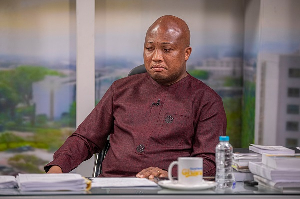Government is not likely to meet the 2012 oil revenue target of GH¢1.24billion because the corporate income taxes component of GH¢384.11million is not likely to be realised, a semi-annual report by the Public Interest and Accountability Committee (PIAC) has established.
“The concern about over-estimation, reflected in the disparities between revenue forecasts and actual receipts, was not addressed in 2012 as petroleum receipts in the first half of 2012 show that the revenue targets for the year might not be met,” the report said.
“These taxes are supposed to be paid quarterly, but in the first two quarters there was no evidence of payment. According to the Ghana Revenue Authority (GRA), the two quarterly returns were filed and no corporate tax was due as per the return,” it added.
The report, covering the periods January to June 2012, said the actual receipts for the first half of 2012 suggest that the government is likely to meet its revenue targets for the year in respect to royalties and participating interests but not corporate taxes.
“The amount received so far constitutes about 60.7% of estimated royalties and 60.2% of carried and participating interest respectively, with a balance of 39.3% and 39.8% left to be received for the remaining half of the year in each case. However, the overall estimate for 2012 might not be realised if the full amount of estimated corporate income taxes is not collected.”
The reason for the Jubilee partners not paying corporate taxes is capital cost recovery provided for in the Petroleum Income Tax Law 1987 (PNDC Law 188), which allows the oil companies to charge exploration and development costs to their revenues before arriving at the taxable profit.
A similar situation occurred in 2011, when government had projected to receive GH¢1.2billion from oil including corporate taxes of about GH¢600million, but ended up getting a total amount of GH¢667million -- representing a shortfall of GH¢583million.
The latest PIAC report indicates that, overall, only 42% of estimated revenues for the year had been realised by the first half of 2012, with the remaining 58% being the balance of royalties, carried and participating interest, and corporate income taxes expected to be collected during the second half of the year.
The revenue forecast for 2012 was based on an estimated average oil price of US$90 per barrel and daily oil production of 90,000 barrels per day. The forecast was made up of royalties of GH¢236.87million, carried and participating interests of GH¢618.84 million, and corporate income taxes of GH¢384.11million.
Total monthly production, however, declined from 2.11 million barrels in January to 1.77 million barrels in June 2012. The average daily production during the period was 62,985 barrels per day.
The report referenced the Ghana National Petroleum Corporation (GNPC) as attributing the drop in production to a temporary shut-down of some production wells for acid-stimulation activity.
The remedial work has since been completed, and daily production has now surpassed 100,000 barrels per day, according to the partners.
In an interview with B&FT, Chairman of the PIAC Major (Rtd.) Ablorh Quarcoo said it is not clear to the committee why government continues to include corporate taxes in its revenue projections.
“That is one of the things that continue to baffle us. We have pointed this thing out to the Ministry of Finance not once, not twice, but about four times already. In a letter to the ministry last year after the budget we pointed it out -- and then they came back to say no, they were not wrong.”
The PIAC’s concern is that the situation could limit transfers to the Ghana Petroleum Funds and lead to premature dependency on the stabilisation fund when the projected amounts are not realised.
The Public Interest and Accountability Committee (PIAC) was created by the Petroleum Revenue Management Act 2011 (Act 815) with the mandate to, among other things, provide an independent assessment of the management and use of petroleum revenues.
The Committee is also mandated by the law to publish a semi-annual and an annual report by the 15th September and 15th March each year respectively. The first report of the Committee was issued in May 2012 and covered management of petroleum revenues for the 2011 financial year.
Asked why the latest report which should have been published on September 15, 2012 had been published in January 2013, the chairman of the committee said his outfit is still faced with the challenge of not being adequately resourced to carry out its functions effectively.
Business News of Friday, 1 February 2013
Source: B&FT
Oil revenues may fall short
Entertainment
















